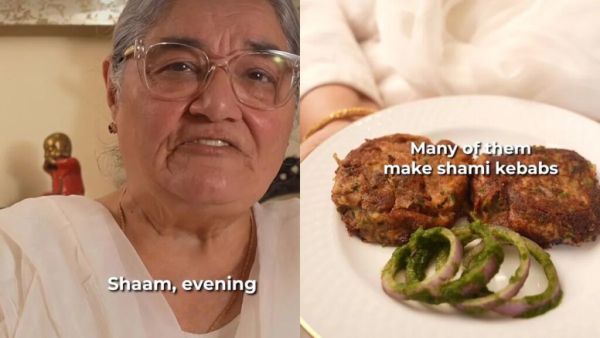
Shami Kebab, a regal gem of South Asian cuisine, is known for its crispy, golden-brown crust and melt-in-the-mouth softness inside. With every bite, this traditional delicacy leaves an unforgettable impression on food lovers. But have you ever wondered how it got its name? A digital content creator behind the Instagram page Dadi Cooks recently shared a video that not only demonstrated a simple recipe for Shami kebab but also delved into the story behind its name.
In the video, the person behind the camera asks, “Why is Shami kebab called Shami kebab?” To which an elderly woman replies, “Shaam, evening, evening snack that became Shami kebab.” The same voice then asks about the common mistake people make when preparing the dish. Without hesitation, the woman answers, “Size of the Shami kebab. Many of them make Shami kebabs very small.”
What follows is a recipe, accompanied by a touching story from the creator’s childhood.
1. Mix the ingredients properly and leave them to cook for about 1 to 1.5 hours.
2. Once cooled, grind the mixture on a grinding stone into a smooth paste.
3. Shape the paste into small patties and fry them until golden brown.
4. When cooked, the kebabs turn out soft and smooth inside, with a crisp, flavorful crust on the outside.
The woman then recalls a memory close to her heart: “After my father’s death, my mother started making kebabs and giving them out in the market, and we used to get a very good response. Shami kebab is a dish of survival. I can call it.”
The video caption further elaborates, “What makes Shami Kebab special is how it balances richness with spice. The dal binds the minced meat while also giving it a creamy mouthfeel, and the spice mix creates a deep, smoky flavour. It’s often served with mint chutney, onions, and lemon wedges, or tucked inside parathas and buns as a snack or meal. Beyond being a popular street food or party dish, Shami Kebabs are also a staple during Ramadan iftars and family gatherings — a comforting symbol of home-cooked warmth and tradition.”
Dadi’s explanation of the dish’s name has sparked lively debate online.
Some connected with the story and shared heartfelt nostalgia, “I have such great memories of Shami Kababs. We used to eat both shami kabab and special Rampuri Chapli kabab during the rainy season at my nani’s house in Rampur.”
Another user commented, “It’s a dish of survival! Truly, you said it so well.. Now it’s a working mother’s go-to savior — it gives nutrition to kids and is easy on time. Love your take on this!”
However, not everyone agreed with Dadi’s version. Some insisted the dish has Middle Eastern roots. “The term ‘Shami’ is derived from the Arabic word ‘Sham,’ which refers to the region of Greater Syria… Since the dish was introduced to India by the country of Syria, that’s why it is called Shami Kabab,” one user wrote.
Echoing the sentiment, another said, “Seriously…. We need this much courage to spread false info…. SHAM in Arabic is ‘Syria’. And authentic Syrian Kebbob is called SHAMI KEBBOB.”
One more comment added, “Shami kabab has nothing to do with evening.. It’s Sham-i kabab, where Sham is an older or ethnic name of Syria… plz look it up properly.”